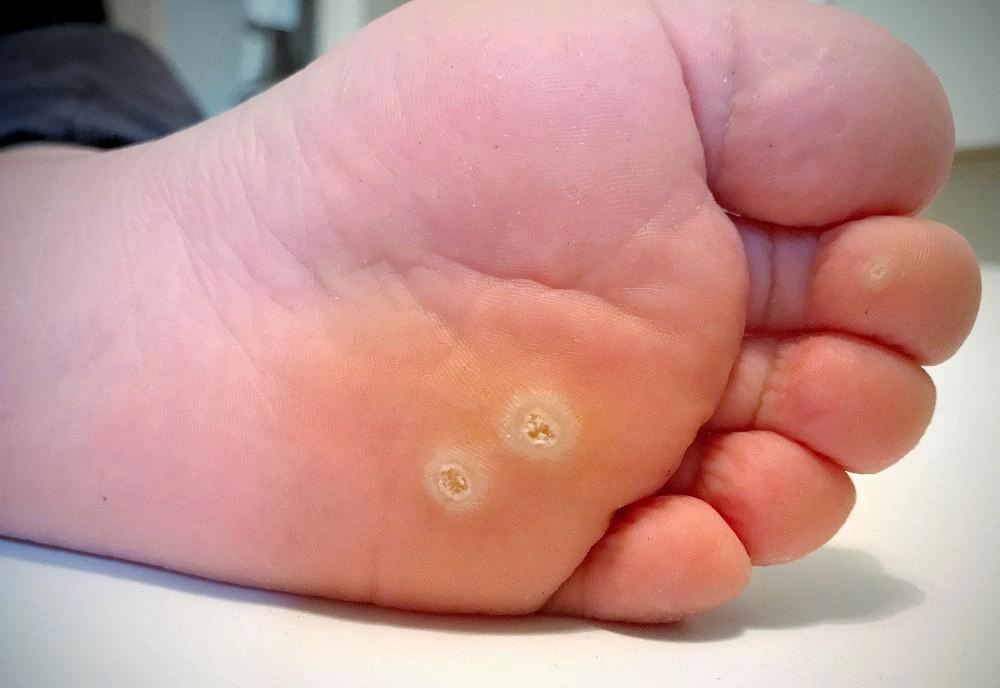Plantar warts are one of the many concerns among individuals seeking podiatry care. Found on the soles of the feet, these growths can cause pain and often raise questions about their origins and prevention. Understanding these warts and their causes is the first step toward managing and avoiding them.
What Are Plantar Warts?
Plantar warts are small, grainy growths that develop on the bottoms of your feet. They are caused by a specific strain of the human papillomavirus (HPV). These warts typically appear as rough patches of skin with small black dots, which are often blood vessels. They often develop on pressure points of the foot, such as the heel or ball, making activities like walking or standing uncomfortable.
What Causes Them?
Plantar warts arise due to direct contact with certain strains of HPV. The virus enters the skin through small cuts, scrapes, or breaks. Areas that are warm and moist, such as locker rooms, swimming pool decks, and communal showers, might be hotspots for spreading this virus. A person’s immune system plays a role in whether they are susceptible to the virus, with individuals with weaker immunity being typically more prone to these infections.
How Can You Prevent Plantar Warts?
There are steps you can take to minimize the risk of developing plantar warts. The first line of protection is maintaining good foot hygiene. Washing your feet regularly and keeping them dry can help reduce the likelihood of infection. Strengthening your immune system through a balanced diet, exercise, and proper rest may also help your body combat potential infections, reducing your overall risk.
Avoid walking barefoot in public places that are known to harbor HPV, such as gym locker rooms or pool areas. Wearing flip-flops or sandals in these environments creates a barrier between your feet and potentially contaminated surfaces. Avoid sharing personal items like shoes or socks, as the virus can spread through contact with infected materials.
What Are the Treatment Options?
When preventive measures are not enough and plantar warts develop, various treatment options are available. These aim to remove the wart or address the pain associated with it.
- Topical Treatments: Over-the-counter ointments and medicated patches work to soften and peel away the wart over time.
- Cryotherapy: This involves freezing the wart with liquid nitrogen, causing the wart tissue to fall off after several sessions.
- Laser Therapy: Laser treatment targets and destroys wart tissue by using focused light energy.
- Acid Treatments: Stronger acid solutions, applied in a medical setting, can burn away the wart.
- Surgery: For warts that are resistant to other methods, surgical removal may be an option.
- Swift Microwave Therapy: This therapy uses electromagnetic waves to target the wart and stimulate the immune system, encouraging it to fight the virus.
Each treatment method has its advantages and may be recommended based on the size, location, and persistence of the wart. Consulting with a podiatrist makes sure you find the most appropriate approach for your situation.
Learn More Today
Plantar warts can be a persistent and painful issue, but they are manageable with the right knowledge and care. By understanding what causes these growths and adopting preventive measures, you can reduce your risk. If you’re dealing with these warts or want personalized advice on prevention, consult a podiatry expert. Schedule an appointment today and take the first step toward healthier feet.
Read More: About Kiolopobgofit Supplement: Benefits, Uses & Expert Guide







